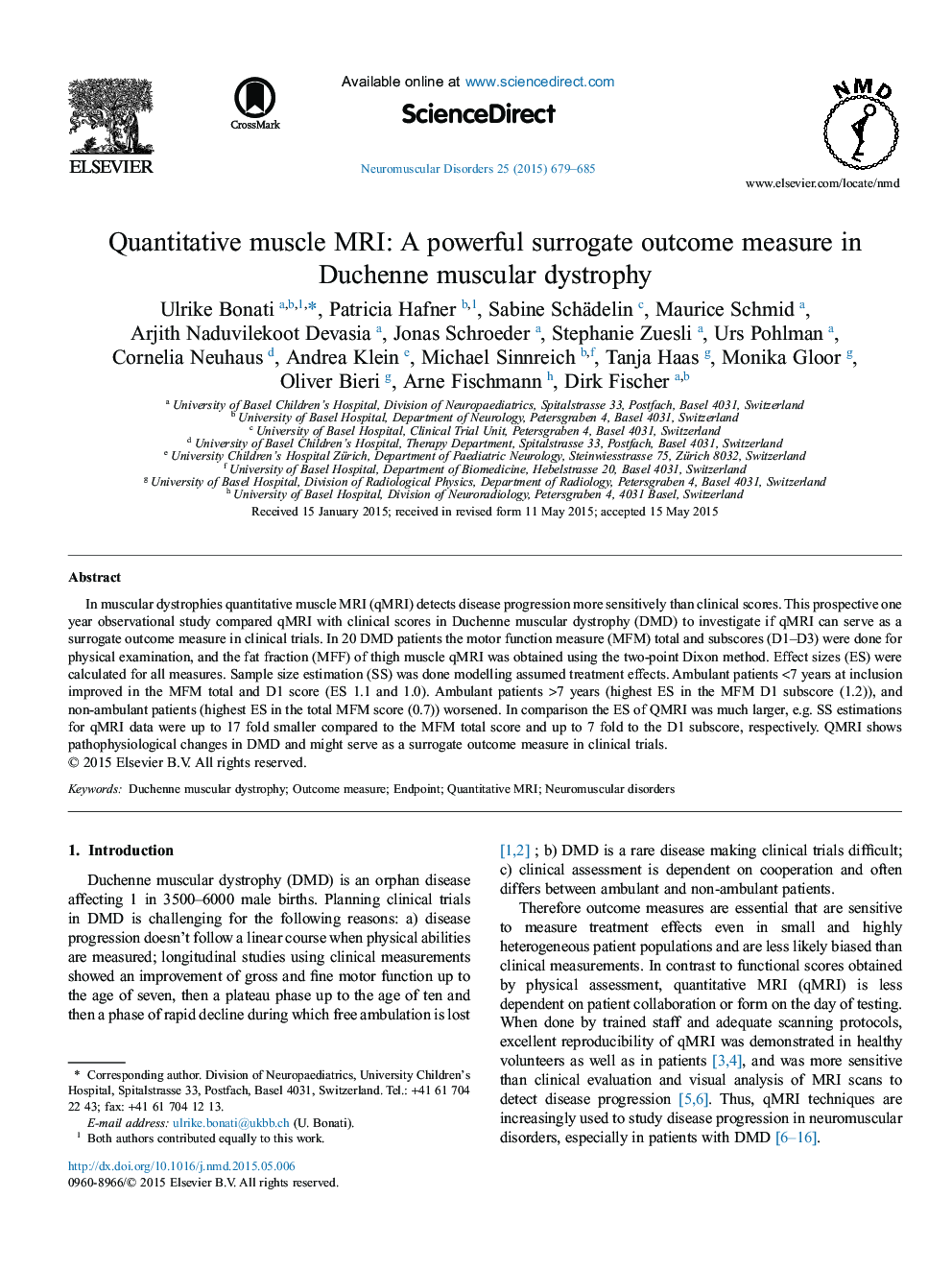| کد مقاله | کد نشریه | سال انتشار | مقاله انگلیسی | نسخه تمام متن |
|---|---|---|---|---|
| 3079213 | 1189280 | 2015 | 7 صفحه PDF | دانلود رایگان |

• Powerful outcome measures for clinical trials in neuromuscular disorders are needed.
• In this study the effect size of qMRI was greater than that of physical scales (MFM).
• Sample size estimations for qMRI were up to 17 fold smaller compared to the MFM.
• QMRI is safe, independent of ambulatory abilities and well tolerated by children.
In muscular dystrophies quantitative muscle MRI (qMRI) detects disease progression more sensitively than clinical scores. This prospective one year observational study compared qMRI with clinical scores in Duchenne muscular dystrophy (DMD) to investigate if qMRI can serve as a surrogate outcome measure in clinical trials. In 20 DMD patients the motor function measure (MFM) total and subscores (D1–D3) were done for physical examination, and the fat fraction (MFF) of thigh muscle qMRI was obtained using the two-point Dixon method. Effect sizes (ES) were calculated for all measures. Sample size estimation (SS) was done modelling assumed treatment effects. Ambulant patients <7 years at inclusion improved in the MFM total and D1 score (ES 1.1 and 1.0). Ambulant patients >7 years (highest ES in the MFM D1 subscore (1.2)), and non-ambulant patients (highest ES in the total MFM score (0.7)) worsened. In comparison the ES of QMRI was much larger, e.g. SS estimations for qMRI data were up to 17 fold smaller compared to the MFM total score and up to 7 fold to the D1 subscore, respectively. QMRI shows pathophysiological changes in DMD and might serve as a surrogate outcome measure in clinical trials.
Journal: Neuromuscular Disorders - Volume 25, Issue 9, September 2015, Pages 679–685